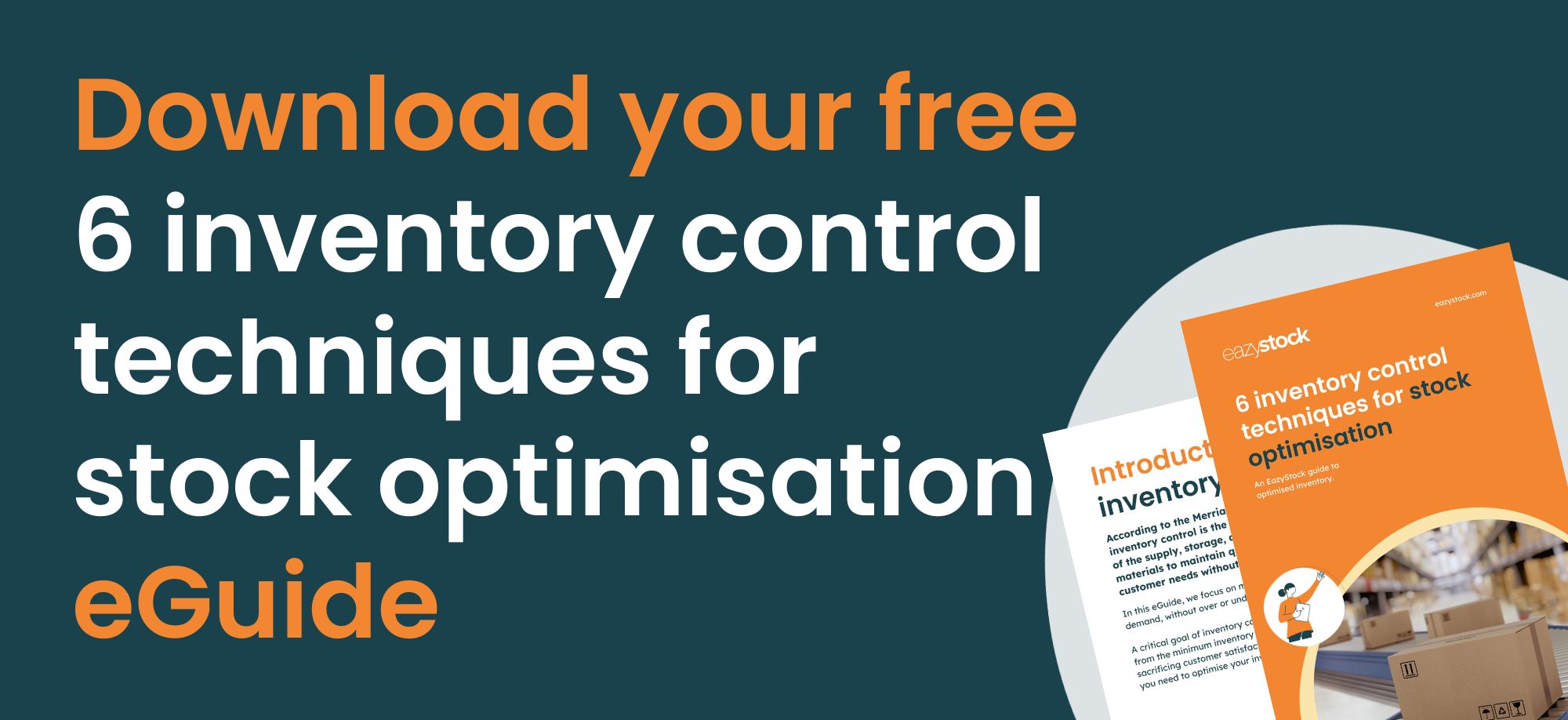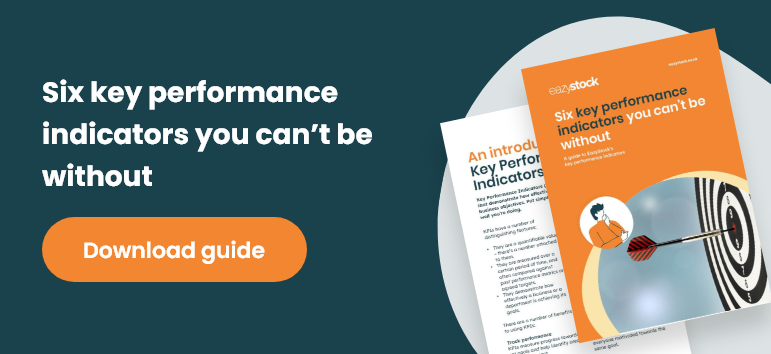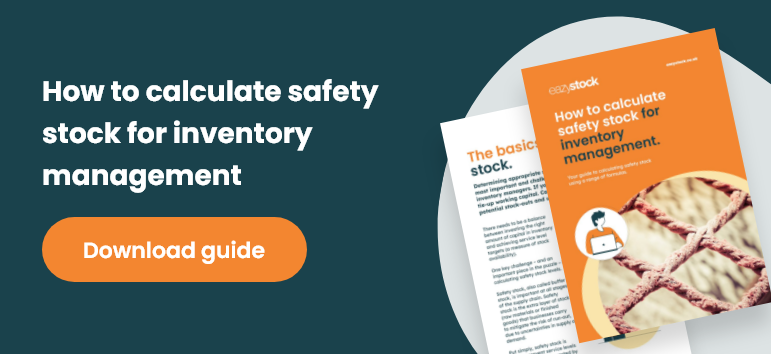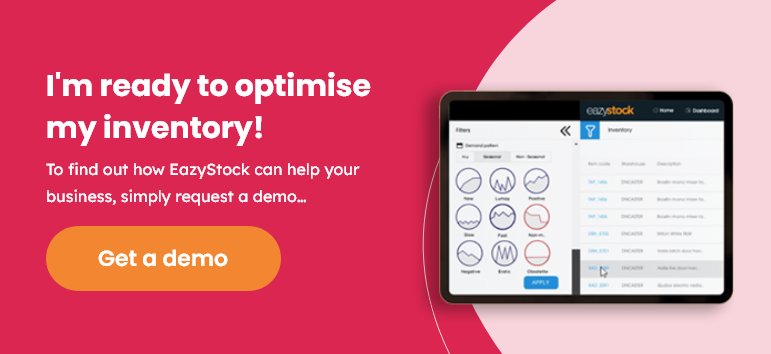6 inventory control techniques to optimise your stock management
Inventory control techniques that help optimise your stock management
There are hundreds of inventory control blog posts on efficiently organising warehouses, tracking goods, and picking and packing efficiently. Instead, we’re focusing on the best inventory control methods to manage your inventory well and ensure stock availability. Effective inventory control techniques are at the heart of efficient supply chains, ensuring products are in the right place at the right time to fulfil demand and ensure customer satisfaction.
We all know that inventory takes up valuable warehouse space, ties up capital and impacts the bottom line. Therefore, it’s important to invest in products that will sell to optimise inventory turnover and warehouse space.
In this post, we’ll examine six inventory control techniques to help you control your stock levels, optimise your inventory and maximise profits.
First, let’s get a few definitions:
What is inventory control?
Inventory control is the process of managing and regulating the supply, storage, and distribution of stock. It is a key supply chain management function that maintains appropriate stock quantities to meet customer demand.

What is stock optimisation?
Stock optimisation aims to have the right products in the right place at the right time as efficiently and cost-effectively as possible. Stock optimisation (also known as inventory optimisation) is key to ensuring inventory control techniques can be carried out effectively. It’s the art of achieving stock availability while reducing inventory costs and minimising the risk of excess items. This is done by forecasting demand and managing supply variables while adjusting stock rules and inventory parameters dynamically.
Six inventory control techniques to optimise stock levels
1. Understand your demand
Our first inventory control technique is all about demand forecasting. Knowing what products to carry to satisfy market demand is crucial in controlling your stock levels. It’s critical to invest time (and money if required) in setting up advanced inventory forecasting models that produce accurate demand forecasts. It’s not enough to look at last year’s sales figures and expect this year’s to follow the same pattern. Effective forecasting should consider the following:
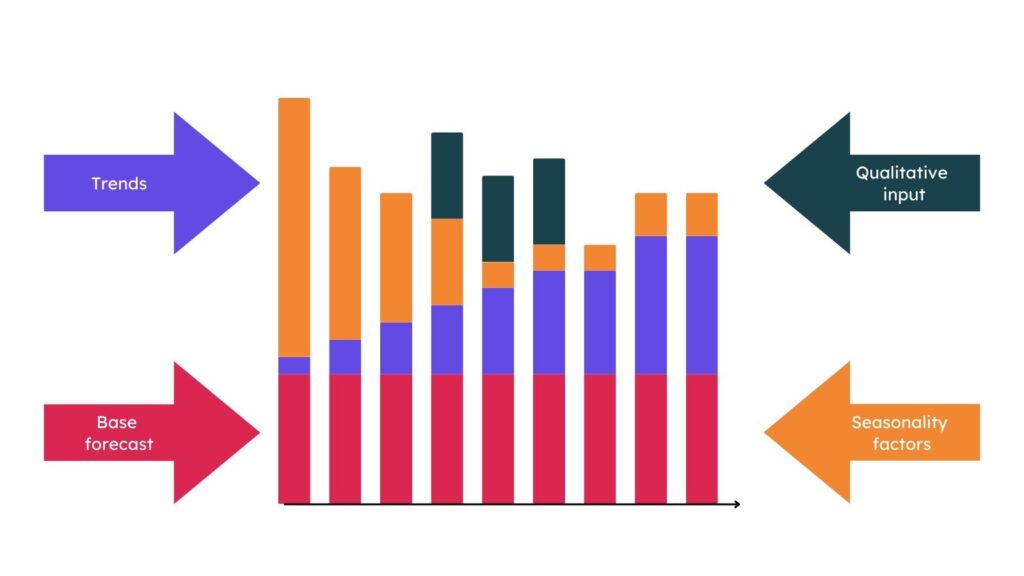
Product lifecycles: Every item in your warehouse is at a specific stage in its product life cycle. Each life cycle stage affects the item’s demand pattern, so it needs to be considered when calculating forecasts. Read our blog on demand forecasting accuracy for more details.
Seasonality: Identify any products in your portfolio that have seasonal demand variations. It’s best practice to keep seasonal demand factors separate from your base demand calculations. This keeps the data clean and easier to use for forecasting going forward.
Trends: Product demand is influenced by fashion, technology, social, economic and legal factors. Look out for such trends in your historical demand data and adjust your forecasts accordingly.
Qualitative factors: Include any qualitative forecasting factors, such as sales promotions, competitor activity or external market events in your data.
Many factors cause demand variability – read our eGuide for the lowdown:
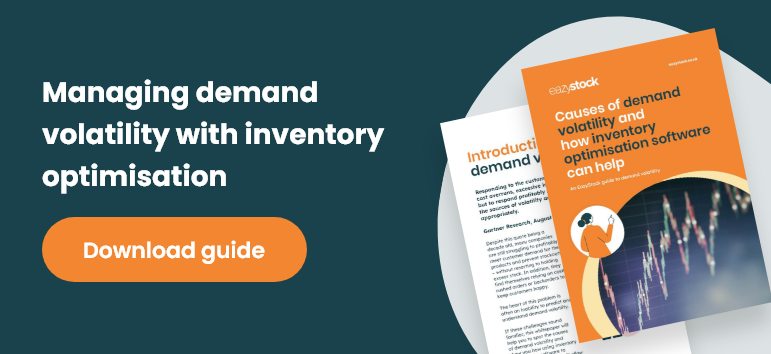
2. Know your star products!
ABC inventory analysis is an excellent technique to segment your warehouse stock based on the value it brings to the company. Every item in your warehouse has a different value regarding how much money it makes the business. There are many ways to define ‘value’, including segmenting based on sales revenue, profitability, sales volume or annual consumption value. Choose one that works for you. Then split your stock into categories – A, B, and C. ‘A’ are the items critical to your business’s success, and ‘C’ are the least important.
ABC classification is a simple way to identify your most important products so that you can focus your tons of stock control and management. In addition, it can help you set out more focused stock control parameters (see next point!)
However, it’s a very simplistic framework that fails to account for supply and demand variables. For more complex inventory classification, utilise inventory optimisation software, which carries out multi-dimensional item categorisation. By segmenting SKUs based on their demand, inventory turnover and profitability, you can get a much greater insight into controlling your stock levels.

3. Set stock level control policies
Inventory policies ensure you’re stocking the right goods in the right quantities – a must for good inventory control in the warehouse. Ensure you have a set of ‘rules’ for each SKU. Inventory classification, such as ABC analysis, will help with this. For example, you should consider setting different service levels, safety stock levels and reordering parameters for each category.
Don’t forget to have a policy for reducing excess stock and removing obsolete items. Excess stock negatively impacts stock turnover, eats into working capital, and negatively impacts cash flow, eating away at your profit margins if it becomes dead stock!
Another consideration here is the cost of storing stock. For example, using the economic order quantity formula (EOQ) to find the order quantity where the cost of ordering inventory and storing it are at their lowest.
You should also set useful inventory KPIs when setting stock level control policies. While this might sound obvious, it’s worth reviewing your current KPIs to ensure they add value to your operations by meeting business objectives and improving efficiency, customer service and profitability.
4. Introduce service level targets to optimise stock
A target service level measures the probability of having the correct quantity of an item in stock when it’s requested for delivery so that there is a completely fulfilled order.
Consider your customers’ availability and delivery time expectations when setting target service levels. For example, suppose a seven-day lead time is acceptable to your customers. You might be able to lower your inventory levels and rely on smaller purchase quantities, reducing tied-up capital, or you could place on-demand orders with your suppliers if they have short lead times for you.
Remember, providing higher service levels than required costs your company money. However, failing to meet customer expectations can lead to lost sales and a damaged reputation. So you need to find a balance.
Service levels will also influence your stock turnover rate. Aim for higher service levels on faster-moving items and lower them for those with less demand, so you can keep your turnover rate high and avoid tying up capital unnecessarily.
5. Fine-tune your stock replenishment strategies
You can only optimise stock levels when you have informed inventory purchasing practices and only order the amount of inventory you need.
Most businesses will reorder when they hit a fixed date or when stock drops to a specified level – the defined reorder point. Most enterprise resource planning (ERP) and warehouse management systems (WMS) will either reorder a fixed or variable amount to meet a minimum or maximum stock capacity. However, if these methods lead to stockouts or excess stock, you need a smarter stock replenishment method. A more ‘informed’ or dynamic approach is to factor in the following variables:
- Demand forecasts
- Supplier lead times
- Cost-effective order quantities
Introducing supply and demand variables into your stock replenishment planning will help the accuracy of your ordering and prevent stock build-up.

6. Carry safety stock to reduce the risk of stockouts
Safety stock, also called buffer stock, is the layer of inventory kept to prevent stockouts and back orders when the forecast is exceeded or supply is delayed. Safety stock minimises disruptions caused by demand, supply chain or fulfilment disruptions while investing the lowest possible amount of capital in inventory.
Many WMS, ERP and inventory management systems still use a basic stock days model to calculate safety stock. For example, they work out the number of days (or weeks) of demand and add enough buffer stock to cover any variance, e.g., four weeks of cycle stock and two weeks of safety stock.
However, this ‘one-size-fits-all’ approach assumes that all goods in the warehouse have similar demand patterns and behave the same. As we’ve already discussed, this isn’t usually the case. The more accurate your safety stock calculations, the less likely you will experience out-of-stock or overstocking situations. When calculating safety stock, the most important factors to consider are:
- The desired service level
- Forecasting accuracy
- Lead time (or delivery variation)
For more information on calculating safety stock, download our eGuide below. Or, to find out how EazyStock stock optimisation software can calculate accurate safety stock levels automatically, request a demo from one of our experts.
It’s time to review your inventory control methods
Optimising your stock levels is impossible without considering supply and demand variables. Effective inventory control techniques, therefore, rely on stock optimisation tactics.
Many businesses use standard ERP, WMS systems or basic inventory management software to execute their stock control procedures, while others still use spreadsheets as their inventory control system. Both approaches have limitations.
Therefore, more businesses are using inventory optimisation software to reduce time-consuming inventory control, automate their processes and improve efficiency. Inventory optimisation tools use advanced algorithms unavailable elsewhere to bring accuracy and speed to inventory management calculations.
This may sound expensive, and enterprise-level inventory software systems might be out of the budgetary reach of many smaller businesses. However, EazyStock is a best-in-class solution born from one of these larger platforms but specifically designed for businesses of all sizes. It is affordable and still delivers sophisticated, dynamic functionality.
As an ERP plug-in, EazyStock is easy to set up and offers actionable inventory cost reductions and service level improvements within weeks of implementation.
Originally published 03/08/2015, updated July 2020 and May 2024.
